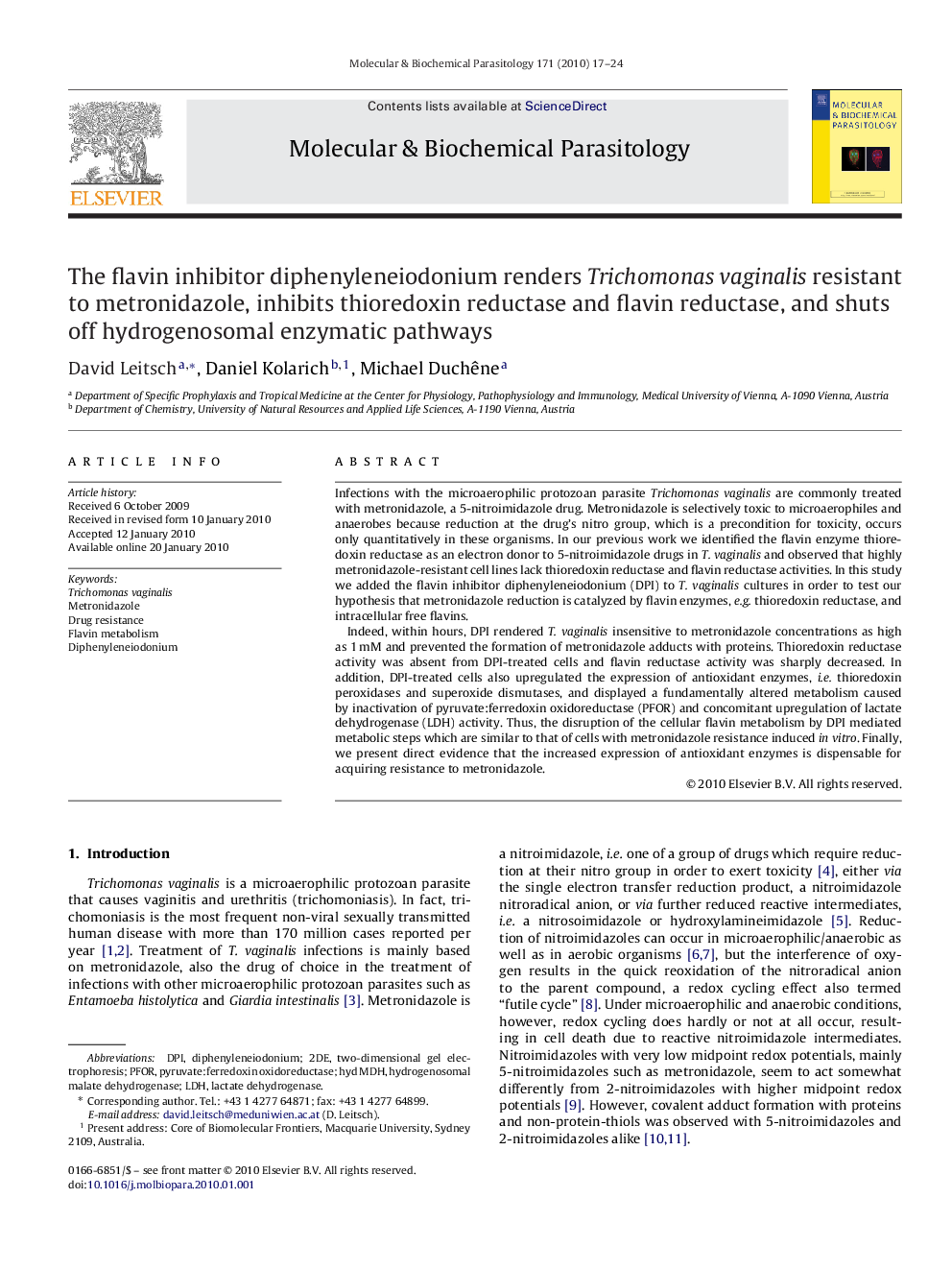| کد مقاله | کد نشریه | سال انتشار | مقاله انگلیسی | نسخه تمام متن |
|---|---|---|---|---|
| 2829939 | 1163330 | 2010 | 8 صفحه PDF | دانلود رایگان |

Infections with the microaerophilic protozoan parasite Trichomonas vaginalis are commonly treated with metronidazole, a 5-nitroimidazole drug. Metronidazole is selectively toxic to microaerophiles and anaerobes because reduction at the drug's nitro group, which is a precondition for toxicity, occurs only quantitatively in these organisms. In our previous work we identified the flavin enzyme thioredoxin reductase as an electron donor to 5-nitroimidazole drugs in T. vaginalis and observed that highly metronidazole-resistant cell lines lack thioredoxin reductase and flavin reductase activities. In this study we added the flavin inhibitor diphenyleneiodonium (DPI) to T. vaginalis cultures in order to test our hypothesis that metronidazole reduction is catalyzed by flavin enzymes, e.g. thioredoxin reductase, and intracellular free flavins.Indeed, within hours, DPI rendered T. vaginalis insensitive to metronidazole concentrations as high as 1 mM and prevented the formation of metronidazole adducts with proteins. Thioredoxin reductase activity was absent from DPI-treated cells and flavin reductase activity was sharply decreased. In addition, DPI-treated cells also upregulated the expression of antioxidant enzymes, i.e. thioredoxin peroxidases and superoxide dismutases, and displayed a fundamentally altered metabolism caused by inactivation of pyruvate:ferredoxin oxidoreductase (PFOR) and concomitant upregulation of lactate dehydrogenase (LDH) activity. Thus, the disruption of the cellular flavin metabolism by DPI mediated metabolic steps which are similar to that of cells with metronidazole resistance induced in vitro. Finally, we present direct evidence that the increased expression of antioxidant enzymes is dispensable for acquiring resistance to metronidazole.
Diphenyleneiodonium renders Trichomonas vaginalis insensitive to very high metronidazole concentrations and induces changes in the proteome and the metabolism that are reminiscent of metronidazole-resistant cells.Figure optionsDownload high-quality image (31 K)Download as PowerPoint slide
Journal: Molecular and Biochemical Parasitology - Volume 171, Issue 1, May 2010, Pages 17–24